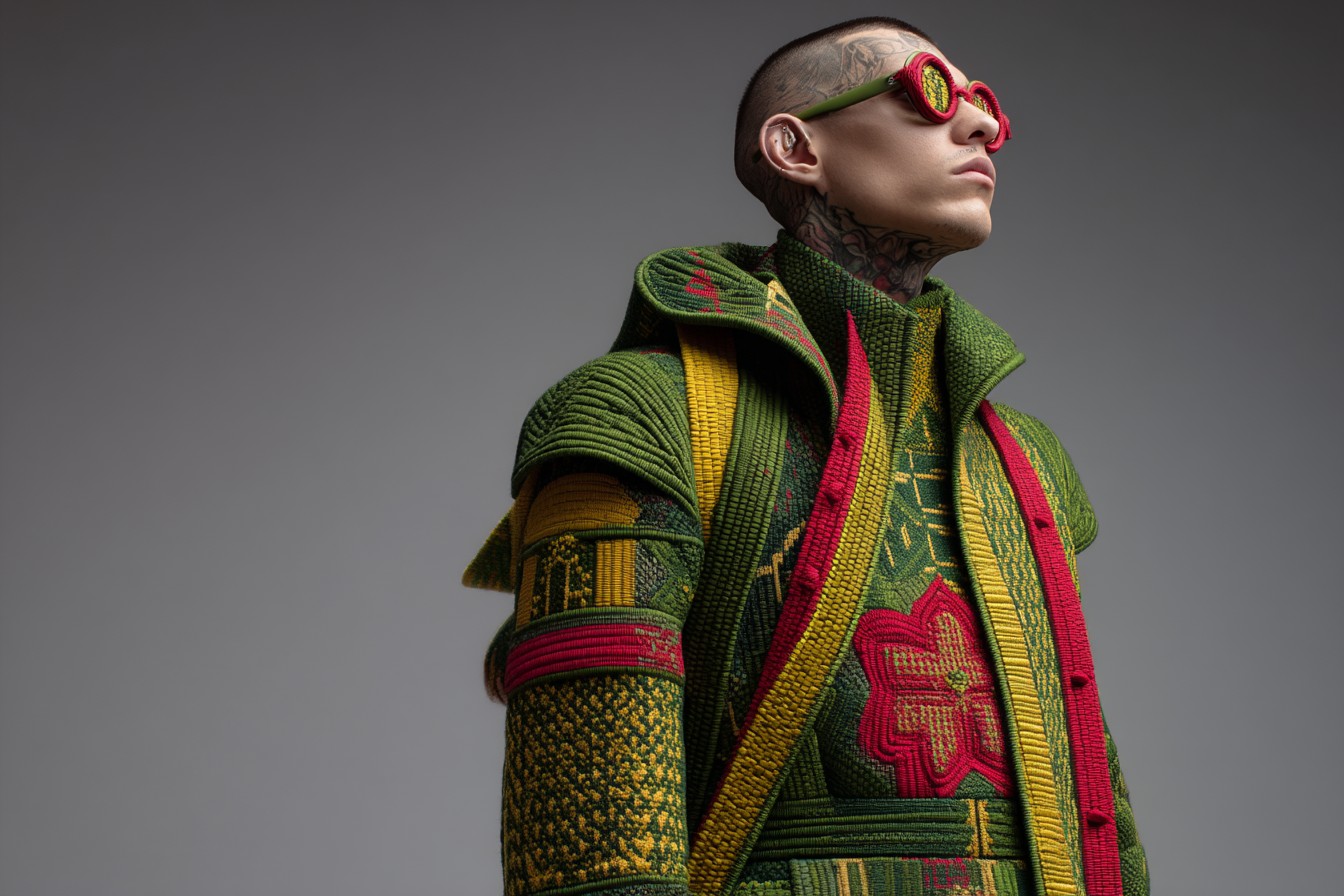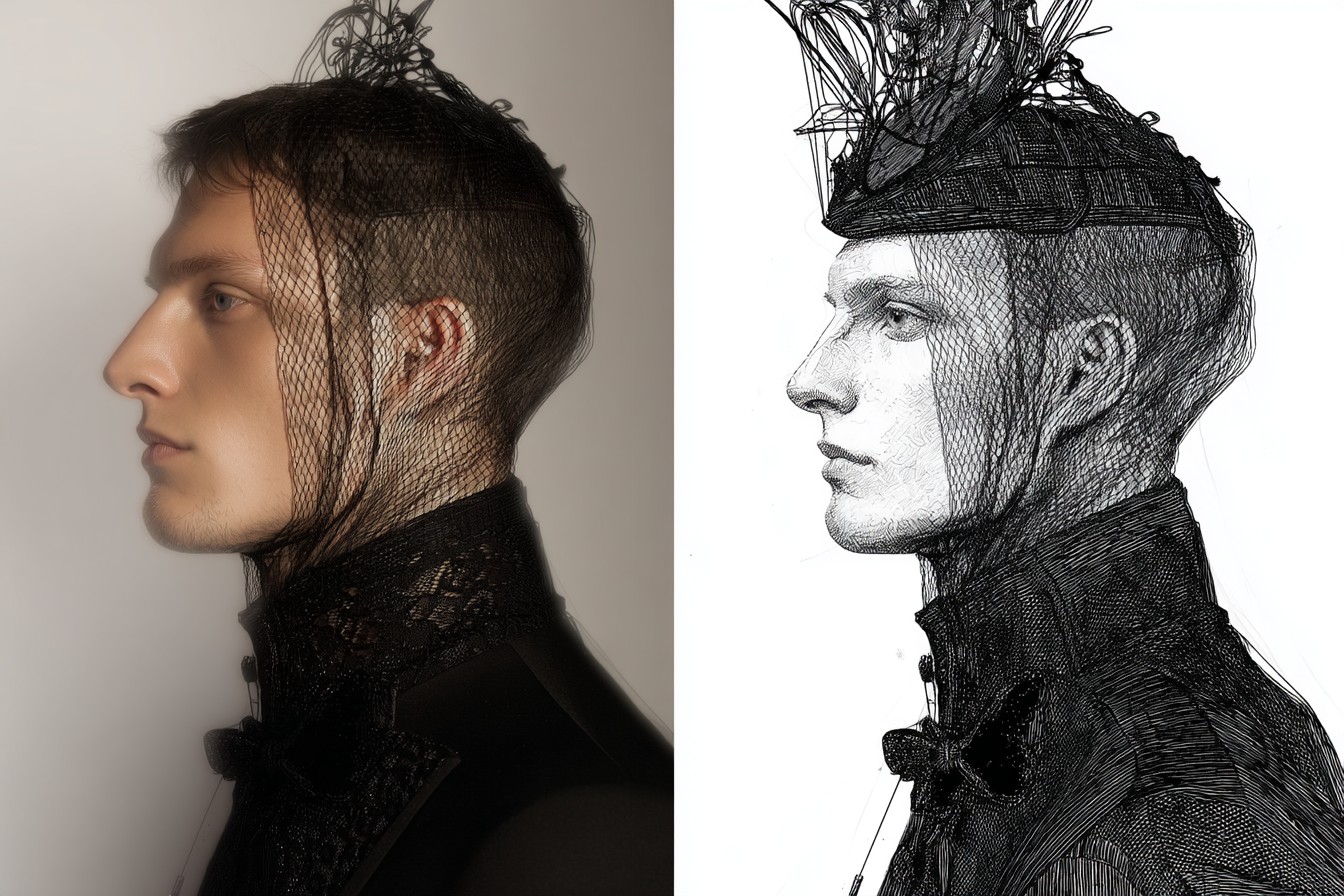I once attended a house party in the Cotswolds where the host—a friend of a friend—greeted guests wearing a shirt so frayed at the collar it appeared to be disintegrating in real time. His trousers had visible wear at the knees and a subtle patch near the back pocket. His shoes, ancient brown brogues polished to a rich patina, had clearly been resoled multiple times. To the untrained eye, he might have looked somewhat shabby—perhaps even down on his luck. Except those trousers were bespoke from Anderson & Sheppard. The shirt was handmade Turnbull & Asser, probably close to a decade old. The shoes were Edward Green, likely older than most of the guests. This man—let’s call him Henry—was worth several million pounds and owned the small estate we were standing in.

Welcome to the strange world of “comfortably posh” dressing—arguably Britain’s most subtle, complex, and aspirational male aesthetic. It’s an approach to style that simultaneously signals tremendous privilege while appearing to care nothing about appearances. It’s clothing that whispers rather than shouts, that ages rather than dates, that values provenance over novelty. And for a style built on the illusion of nonchalance, it takes remarkable confidence and insider knowledge to execute properly.
What makes this aesthetic so distinctively British is its seemingly contradictory nature. In no other country would extreme wealth express itself through deliberate shabbiness. The Italian wealthy signal their status through the sprezzatura of perfectly cut suits and handmade shoes. American old money opts for polished preppy classics. The French go for understated luxury with perfect fit. But the British upper classes? They’re out here wearing inherited jumpers with moth holes and thirty-year-old tweed jackets with sweet packet wrappers permanently embedded in the pockets.
I’ve spent years both observing and occasionally infiltrating these circles (primarily for journalistic purposes, I assure you), and I’ve compiled what amounts to a field guide to this peculiar sartorial approach. Consider this your introduction to the rules of comfortably posh dressing—rules that, ironically, appear to reject the very concept of fashion rules.

The first and most fundamental principle is that clothing should never look new. Fresh-from-the-box anything is considered slightly vulgar, a bit too eager. This extends from casual wear to formal attire. Those green wellies should be caked with several seasons of mud. Tweed jackets need at least a decade of wear before they properly conform to the body. Suits should suggest they’ve witnessed multiple generations of family weddings and funerals. Even black-tie attire ideally carries the subtle implication that it might have belonged to one’s grandfather.
This dedication to the well-worn creates a paradox: the items must be of exceptional quality to age gracefully rather than simply deteriorate. That’s why the comfortably posh wardrobe is fundamentally expensive, even if it doesn’t appear so at first glance. The jumper with elbow patches wasn’t bought that way—it earned them after years of wear, then was properly repaired rather than discarded. The countryside jacket with fade marks where a shotgun once rested against the shoulder has genuinely seen hundreds of days in the field. These clothes tell stories of lives actually lived, not lifestyle aspirations purchased ready-made.
The second principle concerns brands and provenance. There exists an unwritten list of acceptable suppliers that rarely changes from generation to generation. For countryside attire, think Cordings, Purdey, and Farlows. For tailoring, it’s the established Savile Row houses—Huntsman, Anderson & Sheppard, Henry Poole. For shirts, Turnbull & Asser, Hilditch & Key, or New & Lingwood. For shoes, Crockett & Jones, Edward Green, Tricker’s, or John Lobb. Interestingly, these references are never displayed prominently—no visible logos, no showy design signatures—but to the informed observer, the cut and details are unmistakable.

Even more intriguing is how items from these suppliers are acquired. Many are inherited or purchased secondhand. Family hand-me-downs are the gold standard, creating clothing with literal bloodlines. Failing that, vintage and pre-loved pieces from the right sources are perfectly acceptable. I once witnessed a heated debate between two otherwise reserved gentlemen about whether a particular tweed jacket had belonged to someone’s father or uncle—the provenance mattered more than the item itself.
The third principle involves the specific items that form the comfortably posh uniform. For casual country wear, it’s the well-worn Barbour jacket (preferably the Beaufort or Border models, patched multiple times rather than replaced), corduroys or moleskins in muted earth tones, tattersall check shirts, and those famously ancient brown brogues or dealer boots. The knitwear is invariably lambswool or cashmere, often in the distinctive diamond pattern of Fair Isle or simple crew necks in bottle green, navy, or burgundy. Nothing matches perfectly, yet everything harmonizes in a way that suggests generations of accumulated taste rather than a single shopping expedition.
For city wear, it’s classic British tailoring in subtle patterns—often featuring connections to regiments, schools, or clubs that only insiders would recognize. Shirts are predominantly white or blue, with occasional forays into discreet stripes or checks. Accessories are minimal but significant: a signet ring perhaps (never fashionable, always familial), an understated mechanical watch (Jaeger-LeCoultre and Patek Philippe are favorites, always on a leather strap, never ostentation), and possibly a pocket square (though never too artfully arranged—it should look casually stuffed rather than precisely folded).

The fourth principle, and perhaps the most challenging to navigate, is the art of selective scruffiness. True practitioners of comfortably posh style master the balance between care and calculated neglect. Shoes are always impeccably polished, even if their uppers are creased and their soles well-worn. Tailoring may be decades old but is properly maintained—brushed, hung, and respected. Hair may appear slightly unkempt but is cut by the best barbers (often for generations—”My father took me to Trumper’s for my first haircut, as his father did for him”). This selective attention creates the impression that appearance matters in principle but isn’t worth fussing over in practice—a powerful statement about priorities and values.
What makes this aesthetic so difficult to imitate is that it genuinely can’t be purchased off the rack. The passage of time is non-negotiable. You can buy the right Barbour jacket, but without years of wear, repairs, and authentic countryside adventures, it remains conspicuously new. You can invest in bespoke tailoring, but without the patina that comes from decades of use, it lacks the essential lived-in quality. This is an aesthetic that requires patience more than purchasing power.
There’s also the matter of context and bearing. Comfortably posh dressing is accompanied by specific mannerisms, speech patterns, and cultural references that can’t be acquired quickly. The confidence to wear visibly worn clothing in formal settings comes from absolute security in one’s social position. When the Duke of Edinburgh famously attended events in suits that were decades old, it wasn’t frugality but a demonstration that he was beyond fashion—he didn’t need new clothes to affirm his status.
The most fascinating aspect of this style is how it communicates values through textiles. It suggests continuity, tradition, and stewardship rather than consumption. It implies a comfortable relationship with inheritance—both material and cultural. It quietly announces that the wearer values longevity over novelty, quality over quantity, and appropriateness over trendiness. In an age of disposable fashion, there’s something almost radical about clothing intended to last a lifetime or longer.
For those interested in adopting elements of this aesthetic (without the associated class pretensions), focus on the principles rather than specific items. Invest in quality pieces that improve with age. Develop relationships with tailors, shoemakers, and repairers who can maintain your wardrobe for decades. Learn to appreciate patina and wear as adding character rather than detracting from appearance. Be patient—this is a marathon, not a sprint.
The comfortably posh approach raises legitimate questions about privilege and accessibility. Many of the specific items mentioned here are prohibitively expensive for most people. The leisure time required to develop the associated lifestyle signifiers is unevenly distributed across society. The very concept carries unavoidable class connotations in Britain’s still highly stratified society. These are valid critiques.
Yet there’s something worth salvaging from this approach: the fundamental idea that clothing should serve us for many years, that quality transcends fashion, that repair is preferable to replacement, and that our wardrobes might tell authentic stories about our lives rather than aspirational fantasies about who we wish to be.
I’ve seen genuine practitioners of this style wear the same dinner jacket to annual events for thirty years, gradually altering it as their physique changes with age. I’ve watched them instinctively select repairable, resoleable footwear without considering less durable alternatives. I’ve observed their genuine distress when a favorite item becomes truly unwearable after decades of service. These aren’t performances of sustainability but ingrained habits from a pre-disposable era.
The comfortably posh aesthetic is simultaneously ridiculous and admirable, exclusionary and instructive. It represents both entrenched privilege and genuine wisdom about material goods. It can’t be reduced to shopping advice or style tips because it’s fundamentally about values, identity, and relationship to time itself.
Perhaps the most interesting aspect is how this approach has influenced adjacent style cultures. The heritage menswear movement, with its emphasis on provenance and durability, draws heavily from these traditions while democratizing the underlying values. The growing interest in classic tailoring, visible repairs, and buying fewer but better things suggests that aspects of this aesthetic resonate beyond its original social context.
The next time you encounter someone wearing an ancient Barbour with patches upon patches, frayed-collar shirts of obvious quality, or perfectly polished shoes that have clearly walked thousands of miles, consider that you might be observing not just a style choice but a philosophy about material goods embodied in fabric and leather. It’s an approach that says some things improve rather than deteriorate with age and use—including, perhaps, ourselves.
Leave a Reply